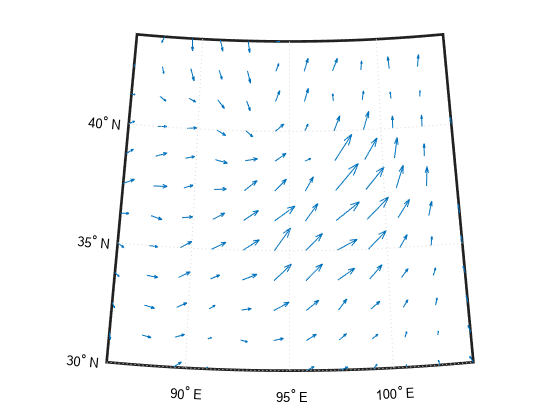quiverm
Project 2-D quiver plot on axesm-based map
Syntax
Description
quiverm(
creates a quiver plot on the current lat,lon,dlat,dlon)axesm-based map. The quiver plot
has arrows with directional components dlat and
dlon at the geographic coordinates specified by
lat and lon. For example, the first arrow
originates from the point lat(1) and lon(1),
extends horizontally according to dlon(1), and extends vertically
according to dlat(1). By default, the function scales the arrow lengths
so that they do not overlap.
quiverm(
adjusts the lengths of the arrows:lat,lon,dlat,dlon,scale)
When
scaleis a positive number, the function automatically adjusts the lengths of arrows so they do not overlap, then stretches them by a factor ofscale. For example, ascaleof2doubles the length of arrows, and ascaleof0.5halves the length of arrows.When
scaleis"off"or0, such asquiverm(lat,lon,dlat,dlon,"off"), the function does not perform automatic scaling.
h = quiverm(___)
Examples
Input Arguments
Output Arguments
Version History
Introduced before R2006a
